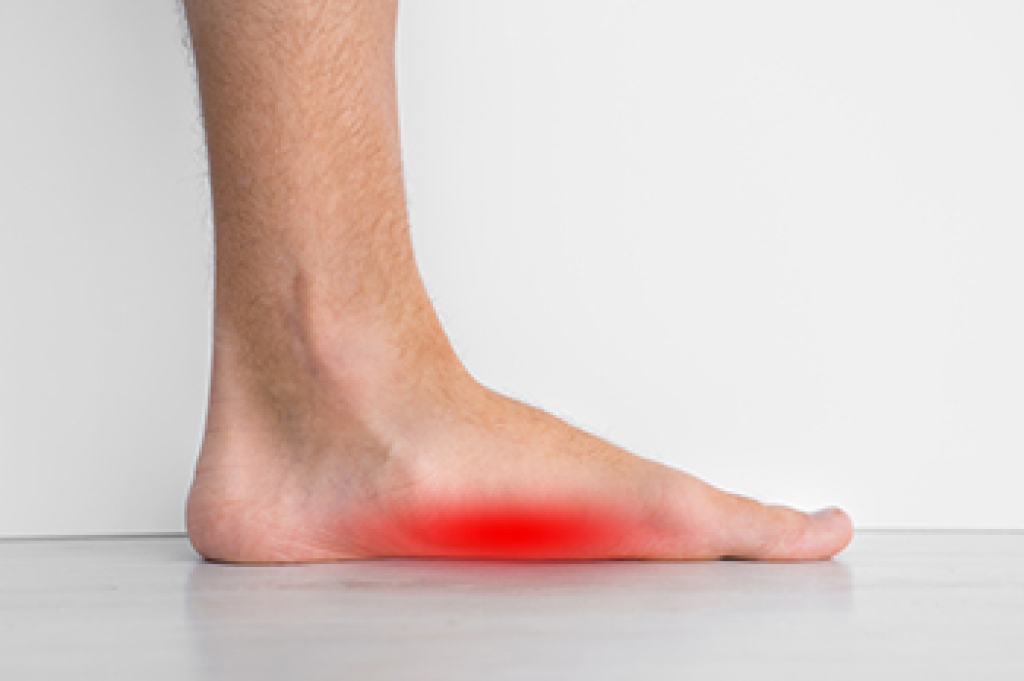
Adult acquired flatfoot deformity is a condition where the arch of the foot collapses, leading to a flattening of the foot's structure over time. This deformity can result from various risk factors, including diabetes, which can cause nerve damage and poor circulation affecting foot mechanics. Obesity adds extra stress to the foot's structure, worsening the condition. Aging contributes to the natural degeneration of bones and joints, weakening the support structures of the foot. Additionally, degeneration of the tendons and ligaments, particularly the posterior tibial tendon, plays a significant role in the development of this deformity. If you have flat feet, it is suggested that you are under the care of a chiropodist who can help you to manage this condition.
Flat feet are a common foot condition. If you are experiencing pain or discomfort due to flat feet, please consult with one of the specialists from Thornhill Foot Clinic. Our chiropodists will assess your condition and provide you with quality foot and ankle treatment.
What Are Flat Feet?
Flat feet are feet that do not have a well-defined arch in the middle of the sole of the foot. Flat feet may be flexible or rigid. Flexible flat feet have an arch when there is no pressure put on the foot, such as when one is sitting, but the arch disappears upon standing. Rigid flat feet lack an arch regardless of whether one is standing or not.
Causes
Flat feet can be present from birth or acquired over time due to a weakening of the ligaments in the arch. Sometimes flat feet are caused by illnesses, injuries, or pregnancy.
Symptoms
Flat feet often cause no noticeable symptoms. However, some people may experience pain and discomfort due to their flat feet.
Symptoms associated with flat feet include:
- Pain in the arch, heel, ankle, or along the outside of the foot
- Overpronation of the foot
- Shin splints
- Aching or fatigue in the feet or legs
- Pain in the knees, hips, or lower back
Treatment
In cases where flat feet cause symptoms, there are various treatments available. Wearing orthotic inserts in your shoes to provide more arch support, performing stretches, and taking medications may improve your symptoms. If you are overweight, losing weight can help relieve pressure on the feet. In severe cases, surgery may be considered.
If you have any questions, please feel free to contact our office located in . We offer the newest diagnostic and treatment technologies for all your foot care needs.
